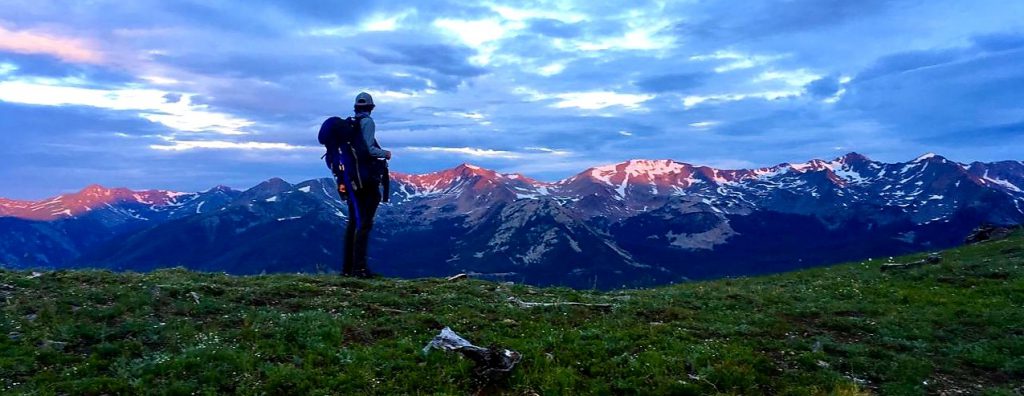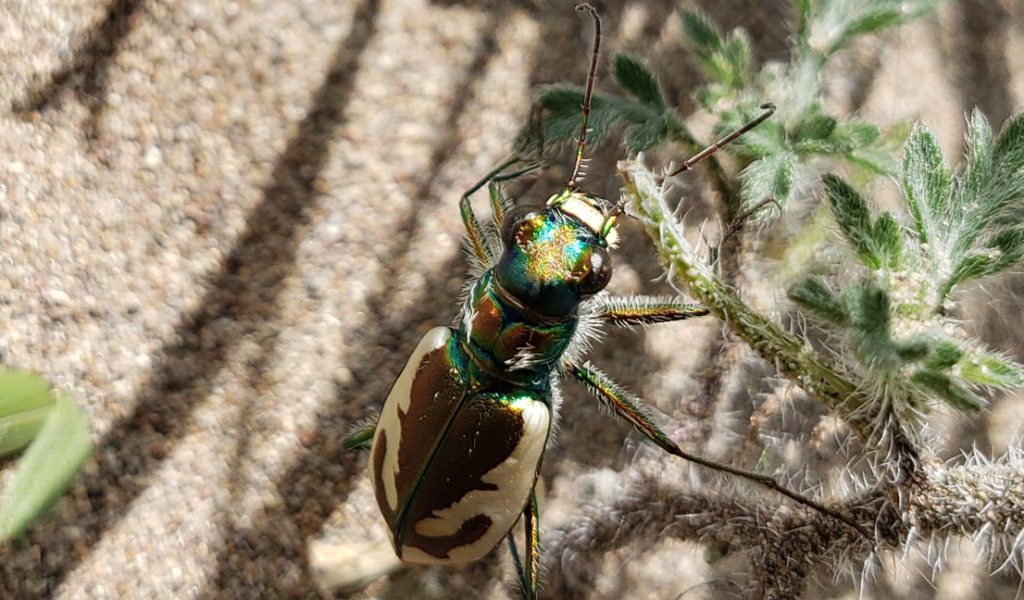By: Kyle Jackson
(CNHP Siegele Conservation Science Intern)
Hello Everyone!
I just got back from my first hitch working on the GLORIA project in Rocky Mountain National Park. For the past five days me and four other crew members would wake up at 3 am and climb up a mountain called Vision Quest. The goal of the GLORIA project is to monitor vegetation in alpine environments across the world to see how it is changing with climate change. The sunrise from 11,900 ft is absolutely breathtaking and we got visited by both mule deer and rocky mountain big horn sheep at the summit during the week. We would spend each of our days setting up our sampling design and then collecting data on the species that live in the alpine and in what abundance they are in. My favorite alpine species is American bistort (Bistorta bistortoides) because it has a beautiful white flower and can be found all around Vision Quest Summit. While I had an amazing first week working on the GLORIA project, I spent the majority of my summer in the Great Sand Dunes.

I got an amazing opportunity to spend most of my summer working out in the Great Sand Dunes on an ungulate (Bison and Elk) management plan for the National Park Service. We would go down to the dunes in 8-day hitches and stayed in tents just outside of the natural resource building by the entry gate. Each day we would visit a new site (or two!) and set up our sample to record data on the vegetation present and in what abundance as well as take soil samples, record how much ungulate poop was in our plot, and take data on water quality from wells that were present on some sites. This data collection was comprehensive and gives researchers a good idea of how a site may be impacted by ungulates compared to other sites that would be protected by enclosures to keep ungulates out. Most of our data collection was done on private land owned by the Nature Conservancy that the National Park Service hopes to acquire soon. My favorite part about working there was getting to our sites everyday which could be quite the task as it involved some serious off-roading across sandy roads and mini dunes. I was hoping we would get a dune buggy, but our behemoth of a truck worked great! I saw some super interesting species in the Sand Dunes including an endemic tiger beetle (Cicindela theatina) that I only saw twice and took me about 10 minutes to chase it down and get a picture of. During my 3rd and last hitch there I climbed to the top of High dune almost every night to watch the sunset. The Medano creek that flows through the dunes was also really flowing well this year and has a mesmerizing surge flow that resembles ocean waves. Overall my time there was an amazing experience that I will remember and refer back to for the rest of my life. Thank you to everyone who helped give me this opportunity and taught me so much during this internship.
Sincerely,
Kyle Jackson

Tiger Beetle




